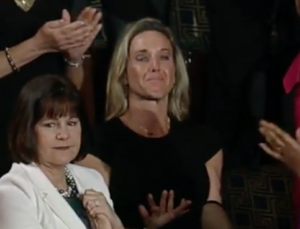From the Archive: David Rockefeller’s death at age 101 brought effusive eulogies, but no recollection of his mysterious role in the Iran hostage crisis of 1980, which helped sink President Carter’s reelection, writes Robert Parry.
By Robert Parry (Originally published April 15, 2005)
On March 23, 1979, late on a Friday afternoon, Chase Manhattan Bank Chairman David Rockefeller and his longtime aide Joseph Verner Reed arrived at a town house in the exclusive Beekham Place neighborhood on New York’s East Side. They were met inside by a small, intense and deeply worried woman who had seen her life turned upside down in the last two months.

Iran’s Princess Ashraf, the strong-willed twin sister of the Iran’s long-time ruler, had gone from wielding immense behind-the-scenes clout in the ancient nation of Persia to living in exile – albeit a luxurious one. With hostile Islamic fundamentalists running her homeland, Ashraf also was troubled by the plight of her ailing brother, the ousted Shah of Iran, who had fled into exile, first to Egypt and then Morocco.
Now, she was turning for help to the man who ran one of the leading U.S. banks, one which had made a fortune serving as the Shah’s banker for a quarter century and handling billions of dollars in Iran’s assets. Ashraf’s message was straightforward. She wanted Rockefeller to intercede with Jimmy Carter and ask the President to relent on his decision against granting the Shah refuge in the United States.
A distressed Ashraf said her brother had been given a one-week deadline to leave his current place of refuge, Morocco. “My brother has nowhere to go,” Ashraf pleaded, “and no one else to turn to.” [See David Rockefeller, Memoirs]
Spurned Appeals
Carter had been resisting appeals to let the Shah enter the United States, fearing that admitting him would endanger the personnel at the U.S. Embassy in Teheran and other U.S. interests. In mid-February 1979, Iranian radicals had overrun the embassy and briefly held the staff hostage before the Iranian government intervened to secure release of the Americans.
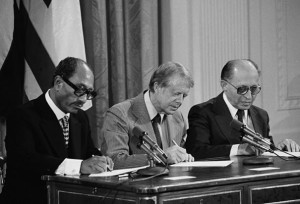
Carter feared a repeat of the crisis. Already the United States was deeply unpopular with the Islamic revolution because of the CIA’s history of meddling in Iranian affairs. The U.S. spy agency had helped organize the overthrow of an elected nationalist government in 1953 and the restoration of the Shah and the Pahlavi family to the Peacock Throne. In the quarter century that followed, the Shah kept his opponents at bay through the coercive powers of his secret police, known as the SAVAK.
As the Islamic Revolution gained strength in January 1979, however, the Shah’s security forces could no longer keep order. The Shah – suffering from terminal cancer – scooped up a small pile of Iranian soil, boarded his jet, sat down at the controls and flew the plane out of Iran to Egypt.
A few days later, Ayatollah Ruhollah Khomeini, an ascetic religious leader who had been forced into exile by the Shah, returned to a tumultuous welcome from crowds estimated at a million strong, shouting “Death to the Shah.” The new Iranian government began demanding that the Shah be returned to stand trial for human rights crimes and that he surrender his fortune, salted away in overseas accounts.
The new Iranian government also wanted Chase Manhattan to return Iranian assets, which Rockefeller put at more than $1 billion in 1978, although some estimates ran much higher. The withdrawal might have created a liquidity crisis for the bank, which already was coping with financial troubles.
Ashraf’s personal appeal put Rockefeller in what he described, with understatement, as “an awkward position,” according to his autobiography Memoirs.
“There was nothing in my previous relationship with the Shah that made me feel a strong obligation to him,” wrote the scion of the Rockefeller oil and banking fortune who had long prided himself in straddling the worlds of high finance and public policy. “He had never been a friend to whom I owed a personal debt, and neither was his relationship with the bank one that would justify my taking personal risks on his behalf. Indeed, there might be severe repercussions for Chase if the Iranian authorities determined that I was being too helpful to the Shah and his family.”
Later on March 23, after leaving Ashraf’s residence, Rockefeller attended a dinner with Happy Rockefeller, the widow of his brother Nelson who had died two months earlier. Also at the dinner was former Secretary of State Henry Kissinger, a long-time associate of the Rockefeller family.
Discussing the Shah’s plight, Happy Rockefeller described her late husband’s close friendship with the Shah, which had included a weekend stay with the Shah and his wife in Teheran in 1977. Happy said that when Nelson learned that the Shah would be forced to leave Iran, Nelson offered to pick out a new home for the Shah in the United States.
The dinner conversation also turned to what the participants saw as the dangerous precedent that President Carter was setting by turning his back on a prominent U.S. ally. What message of American timidity was being sent to other pro-U.S. leaders in the Middle East?
‘Flying Dutchman’
The dinner led to a public campaign by Rockefeller – along with Kissinger and former Chase Manhattan Bank Chairman John McCloy – to find a suitable home in exile for the Shah. Country after country had closed their doors to the Shah as he began a humiliating odyssey as what Kissinger would call a modern-day “Flying Dutchman,” wandering in search of a safe harbor.
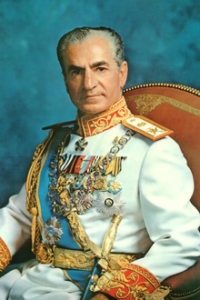
Rockefeller assigned his aide, Joseph Reed, “to help [the Shah] in any way he could,” including serving as the Shah’s liaison to the U.S. government. McCloy, one of the so-called Wise Men of the post-World War II era, was representing Chase Manhattan as an attorney with Milbank, Tweed, Hadley and McCloy. One of his duties was to devise a financial strategy for staving off Iran’s withdrawal of assets from the bank.
Rockefeller also pressed the Shah’s case personally with Carter when the opportunity presented itself. On April 9, 1979, at the end of an Oval Office meeting on another topic, Rockefeller handed Carter a one-page memo describing the views of many foreign leaders disturbed by recent U.S. foreign policy actions, including Carter’s treatment of the Shah.
“With virtually no exceptions, the heads of state and other government leaders I saw expressed concern about United States foreign policy which they perceived to be vacillating and lacking in an understandable global approach,” Rockefeller’s memo read. “They have questions about the dependability of the United States as a friend.” An irritated Carter abruptly ended the meeting.
Temporary Havens
Despite the mounting pressure from influential quarters, Carter continued to rebuff appeals to let the Shah into the United States. So the Shah’s influential friends began looking for alternative locations, asking other nations to shelter the ex-Iranian ruler.
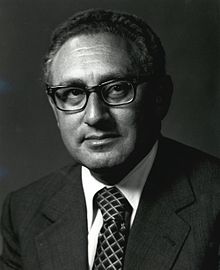
Finally, arrangements were made for the Shah to fly to the Bahamas and – when the Bahamian government turned out to be more interested in money than humanitarianism – to Mexico.
“With the Shah safely settled in Mexico, I had hopes that the need for my direct involvement on his behalf had ended,” Rockefeller wrote in Memoirs. “Henry [Kissinger] continued to publicly criticize the Carter administration for its overall management of the Iranian crisis and other aspects of its foreign policy, and Jack McCloy bombarded [Carter’s Secretary of State] Cyrus Vance with letters demanding the Shah’s admission to the United States.”
When the Shah’s medical condition took a turn for the worse in October, Carter relented and agreed to let the Shah fly to New York for emergency treatment. Celebrating Carter’s reversal, Rockefeller’s aide Joseph Reed wrote in a memo, “our ‘mission impossible’ is completed. … My applause is like thunder.”
When the Shah arrived in New York on October 23, 1979, Reed checked the Shah into New York Hospital under a pseudonym, “David Newsome,” a play on the name of Carter’s undersecretary of state for political affairs, David Newsom.
Embassy Crisis
The arrival of the Shah in New York led to renewed demands from Iran’s new government that the Shah be returned to stand trial.
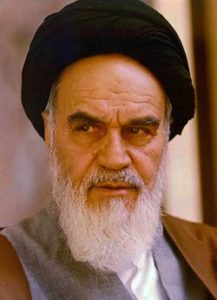
In Teheran, students and other radicals gathered at the university, called by their leaders to what was described as an important meeting, according to one of the participants whom I interviewed years later.
The students gathered in a classroom which had three blackboards turned toward the wall. A speaker told the students that they were about to undertake a mission supported by Ayatollah Khomeini, Iran’s spiritual leader and the de facto head of the government.
“They said it would be dangerous and that anyone who didn’t want to take part could leave now,” the Iranian told me. “But no one left. Then, they turned around the blackboards. There were three buildings drawn on the blackboards. They were the buildings of the U.S. embassy.”
The Iranian said the target of the raid was not the embassy personnel, but rather the embassy’s intelligence documents.
“We had believed that the U.S. government had been manipulating affairs inside Iran and we wanted to prove it,” he said. “We thought if we could get into the embassy, we could get the documents that would prove this. We hadn’t thought about the hostages. We all went to the embassy. We had wire cutters to cut through the fence. We started climbing over the fences. We had expected more resistance. When we got inside, we saw the Americans running and we chased them.”
Marine guards set off tear gas in a futile attempt to control the mob, but held their fire to avoid bloodshed. Other embassy personnel hastily shredded classified documents, although there wasn’t time to destroy many of the secret papers. The militant students found themselves in control not only of the embassy and hundreds of sensitive U.S. cables, but dozens of American hostages as well.
An international crisis had begun, a hinge that would swing open unexpected doors for both American and Iranian history.
Hidden Compartments
David Rockefeller denied that his campaign to gain the Shah’s admittance to the United States had provoked the crisis, arguing that he was simply filling a vacuum created when the Carter administration balked at doing the right thing.
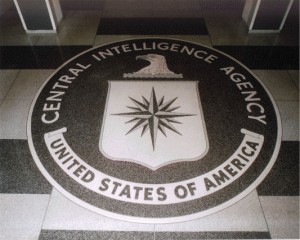
“Despite the insistence of journalists and revisionist historians, there was never a ‘Rockefeller-Kissinger behind-the-scenes campaign’ that placed ‘relentless pressure’ on the Carter administration to have the Shah admitted to the United States regardless of the consequences,” Rockefeller wrote in Memoirs. “In fact, it would be more accurate to say that for many months we were the unwilling surrogates for a government that had failed to accept its full responsibilities.”
But within the Iranian hostage crisis, there would be hidden compartments within hidden compartments, as influential groups around the world acted in what they perceived to be their personal or their national interests.
Rockefeller was just one of many powerful people who felt that Jimmy Carter deserved to lose his job. With the hostage crisis started, a countdown of 365 days began toward the 1980 elections. Though he may have been only dimly aware of his predicament, Carter faced a remarkable coalition of enemies both inside and outside the United States.
In the Persian Gulf, the Saudi royal family and other Arab oil sheiks blamed Carter for forsaking the Shah and feared their own playboy life styles might be next on the list for the Islamic fundamentalists. The Israeli government saw Carter as too cozy with the Palestinians and too eager to cut a peace deal that would force Israel to surrender land won in the 1967 war.
European anti-communists believed Carter was too soft on the Soviet Union and was risking the security of Europe. Dictators in the Third World – from the Philippines and South Korea to Argentina and El Salvador – were bristling at Carter’s human rights lectures.
Inside the United States, the Carter administration had made enemies at the CIA by purging many of the Old Boys who saw themselves as protectors of America’s deepest national interests. Many CIA veterans, including some still within the government, were disgruntled. And, of course, the Republicans were determined to win back the White House, which many felt had been unjustly taken from their control after Richard Nixon’s landslide victory in 1972.
This subterranean struggle between Carter, trying desperately to free the hostages before the 1980 election, and those who stood to benefit by thwarting him became known popularly as the “October Surprise” controversy.
The nickname referred to the possibility that Carter might have ensured his reelection by arranging the hostage return the month before the presidential election as an October Surprise, although the term came ultimately to refer to clandestine efforts to stop Carter from pulling off his October Surprise.
CIA Old Boys
When the hostage crisis wasn’t resolved in the first few weeks and months, the attention of many disgruntled CIA Old Boys also turned toward the American humiliation in Iran, which they found doubly hard to take since it had been the site of the agency’s first major victory, the restoration of the Shah to the Peacock Throne.

A number of veterans from that operation of 1953 were still alive in 1980. Archibald Roosevelt was one of the Old Boys from the Iranian operation. He had moved on to become an adviser to David Rockefeller at Chase Manhattan Bank.
Another was Miles Copeland, who had served the CIA as an intermediary to Arab leaders, including Egyptian President Gamal Abdul Nasser. In his autobiography, The Game Player, Copeland claimed that he and his CIA chums prepared their own Iranian hostage rescue plan in March 1980.
When I interviewed Copeland in 1990 at his thatched-roofed cottage outside Oxford in the English countryside, he said he had been a strong supporter of George H.W. Bush in 1980. He even had founded an informal support group called “Spooks for Bush.”
Sitting among photos of his children who included the drummer for the rock group, The Police, and the manager for the rock star, Sting, Copeland explained that he and his CIA colleagues considered Carter a dangerous idealist.
“Let me say first that we liked President Carter,” Copeland told me “He read, unlike President Reagan later, he read everything. He knew what he was about. He understood the situation throughout the Middle East, even these tenuous, difficult problems such as Arabs and Israel.
“But the way we saw Washington at that time was that the struggle was really not between the Left and the Right, the liberals and the conservatives, as between the Utopians and the realists, the pragmatists. Carter was a Utopian. He believed, honestly, that you must do the right thing and take your chance on the consequences. He told me that. He literally believed that.”
Copeland’s deep Southern accent spit out the words with a mixture of amazement and disgust. To Copeland and his CIA friends, Carter deserved respect for a first-rate intellect but contempt for his idealism.
“Most of the things that were done [by the United States] about Iran had been on a basis of stark realism, with possibly the exception of letting the Shah down,” Copeland said. “There are plenty of forces in the country we could have marshaled. … We could have sabotaged [the revolution, but] we had to establish what the Quakers call ‘the spirit of the meeting’ in the country, where everybody was thinking just one way. The Iranians were really like sheep, as they are now.”
Altar of Ideals
But Carter, troubled by the Shah’s human rights record, delayed taking decisive action and missed the moment of opportunity, Copeland said. Infuriating the CIA’s Old Boys, Carter had sacrificed an ally on the altar of idealism.
“Carter really believed in all the principles that we talk about in the West,” Copeland said, shaking his mane of white hair. “As smart as Carter is, he did believe in Mom, apple pie and the corner drug store. And those things that are good in America are good everywhere else.”
Veterans of the CIA and Republicans from the Nixon-Ford administrations judged that Carter simply didn’t measure up to the demands of a harsh world.
“There were many of us – myself along with Henry Kissinger, David Rockefeller, Archie Roosevelt in the CIA at the time – we believed very strongly that we were showing a kind of weakness, which people in Iran and elsewhere in the world hold in great contempt,” Copeland said. “The fact that we’re being pushed around, and being afraid of the Ayatollah Khomeini, so we were going to let a friend down, which was horrifying to us. That’s the sort of thing that was frightening to our friends in Saudi Arabia, in Egypt and other places.”
But Carter also bent to the moral suasions of the Shah’s friends, who argued on humanitarian grounds that the ailing Shah deserved admission to the United States for medical treatment. “Carter, I say, was not a stupid man,” Copeland said. Carter had even a greater flaw: “He was a principled man.”
So, Carter decided that the moral act was to allow the Shah to enter the United States for treatment, leading to the result Carter had feared: the seizure of the U.S. Embassy.
Frozen Assets
As the crisis dragged on, the Carter administration cranked up the pressure on the Iranians. Along with diplomatic initiatives, Iran’s assets were frozen, a move that ironically helped David Rockefeller’s Chase Manhattan Bank by preventing the Iranians from cleaning out their funds from the bank’s vaults.
In Memoirs, Rockefeller wrote that the Iranian “government did reduce the balances they maintained with us during the second half of 1979, but in reality they had simply returned to their historic level of about $500 million,” Rockefeller wrote. “Carter’s ‘freeze’ of official Iranian assets protected our position, but no one at Chase played a role in convincing the administration to institute it.”
In the weeks that followed the embassy seizure, Copeland said he and his friends turned their attention to figuring a way out of the mess.
“There was very little sympathy for the hostages,” Copeland said. “We all have served abroad, served in embassies like that. We got additional pay for danger. I think, for Syria, I got fifty percent extra in salary. So it’s a chance you take. When you join the army, you take a chance of getting in a war and getting shot. If you’re in the diplomatic service, you take a chance on having some horror like this descend on you.
“But on the other hand, we did think that there were things we could do to get them out, other than simply letting the Iranians, the students, and the Iranian administration know that they were beating us,” Copeland said. “We let them know what an advantage they had. That we could have gotten them out is something that all of us old professionals of the covert action school, we said from the beginning, ‘Why don’t they let us do it?’”
According to The Game Player, Copeland met his old friend, ex-CIA counter-intelligence chief James Angleton, for lunch. The famed spy hunter “brought to lunch a Mossad chap who confided that his service had identified at least half of the ‘students,’ even to the extent of having their home addresses in Teheran,” Copeland wrote. “He gave me a rundown on what sort of kids they were. Most of them, he said, were just that, kids.”
Periphery Strategy
The Israeli government was another deeply interested player in the Iran crisis. For decades, Israel had cultivated covert ties with the Shah’s regime as part of a Periphery Strategy of forming alliances with non-Arab states in the region to prevent Israel’s Arab enemies from focusing all their might against Israel.

Though losing an ally when the Shah fell and offended by the anti-Israeli rhetoric from the Khomeini regime, Israel had gone about quietly rebuilding relations with the Iranian government. One of the young Israeli intelligence agents assigned to this task was an Iranian-born Jew named Ari Ben-Menashe, who had immigrated to Israel as a teen-ager and was valuable because he spoke fluent Farsi and still had friends in Iran, some of whom were rising within the new revolutionary bureaucracy.
In his own 1992 memoirs, Profits of War, Ben-Menashe said the view of Israel’s Likud leaders, including Prime Minister Menachem Begin, was one of contempt for Jimmy Carter in the late 1970s.
“Begin loathed Carter for the peace agreement forced upon him at Camp David,” Ben-Menashe wrote. “As Begin saw it, the agreement took away Sinai from Israel, did not create a comprehensive peace, and left the Palestinian issue hanging on Israel’s back.”
After the Shah fell, Begin grew even more dissatisfied with Carter’s handling of the crisis and alarmed over the growing likelihood of an Iraqi attack on Iran’s oil-rich Khuzistan province. Israel saw Iraq’s Saddam Hussein as a far greater threat to Israel than Iran’s Khomeini. Ben-Menashe wrote that Begin, recognizing the realpolitik needs of Israel, authorized shipments to Iran of small arms and some spare parts, via South Africa, as early as September 1979.
After the U.S. hostages were taken in November 1979, the Israelis came to agree with Copeland’s hard-headed skepticism about Carter’s approach to the hostage issue, Ben- Menashe wrote. Even though Copeland was generally regarded as a CIA “Arabist” who had opposed Israeli interests in the past, he was admired for his analytical skills, Ben-Menashe wrote.
“A meeting between Miles Copeland and Israeli intelligence officers was held at a Georgetown house in Washington, D.C.,” Ben-Menashe wrote. “The Israelis were happy to deal with any initiative but Carter’s. David Kimche, chief of Tevel, the foreign relations unit of Mossad, was the senior Israeli at the meeting. … The Israelis and the Copeland group came up with a two-pronged plan to use quiet diplomacy with the Iranians and to draw up a scheme for military action against Iran that would not jeopardize the lives of the hostages.”
In late February 1980, Seyeed Mehdi Kashani, an Iranian emissary, arrived in Israel to discuss Iran’s growing desperation for aircraft spare parts, Ben-Menashe wrote. Kashani, whom Ben-Menashe had known from their school days in Teheran, also revealed that the Copeland initiative was making inroads inside Iran and that approaches from some Republican emissaries had already been received, Ben-Menashe wrote.
“Kashani said that the secret ex-CIA-Miles-Copeland group was aware that any deal cut with the Iranians would have to include the Israelis because they would have to be used as a third party to sell military equipment to Iran,” according to Ben-Menashe. In March, the following month, the Israelis made their first direct military shipment to Iran, 300 tires for Iran’s F-4 fighter jets, Ben-Menashe wrote.
Rescue Plans
In the 1990 interview at his house in the English countryside, Copeland told me that he and other CIA old-timers developed their own hostage-rescue plan. Copeland said the plan – which included cultivating political allies within Iran and using disinformation tactics to augment a military assault – was hammered out on March 22, 1980, in a meeting at his Georgetown apartment.
Copeland said he was aided by Steven Meade, the ex-chief of the CIA’s Escape and Evasion Unit; Kermit Roosevelt, who had overseen the 1953 coup in Iran; and Archibald Roosevelt, the adviser to David Rockefeller.

“Essentially, the idea was to have some Iranians dressed in Iranian military uniform and police uniform go to the embassy, address the students and say, ‘Hey, you’re doing a marvelous job here. But now we’ll relieve you of it, because we understand that there’s going to be a military force flown in from outside. And they’re going to hit you, and we’re going to scatter these [hostages] around town. Thanks very much.”
Copeland’s Iranians would then move the hostages to the edge of Teheran where they would be loaded onto American helicopters to be flown out of the country.
To Copeland’s chagrin, his plan fell on deaf ears in the Carter administration, which was developing its own rescue plan that would rely more on U.S. military force with only modest help from Iranian assets in Teheran. So, Copeland said he distributed his plan outside the administration, to leading Republicans, giving sharper focus to their contempt for Carter’s bungled Iranian strategy.
“Officially, the plan went only to people in the government and was top secret and all that,” Copeland said. “But as so often happens in government, one wants support, and when it was not being handled by the Carter administration as though it was top secret, it was handled as though it was nothing. … Yes, I sent copies to everybody who I thought would be a good ally. …
“Now I’m not at liberty to say what reaction, if any, ex-President Nixon took, but he certainly had a copy of this. We sent one to Henry Kissinger, and I had, at the time, a secretary who had just worked for Henry Kissinger, and Peter Rodman, who was still working for him and was a close personal friend of mine, and so we had these informal relationships where the little closed circle of people who were, a, looking forward to a Republican President within a short while and, b, who were absolutely trustworthy and who understood all these inner workings of the international game board.”
By April 1980, Carter’s patience was wearing thin, both with the Iranians and some U.S. allies. After discovering that the Israelis had made a secret shipment of 300 tires to Iran, Carter complained to Prime Minister Begin.
“There had been a rather tense discussion between President Carter and Prime Minister Begin in the spring of 1980 in which the President made clear that the Israelis had to stop that, and that we knew that they were doing it, and that we would not allow it to continue, at least not allow it to continue privately and without the knowledge of the American people,” Carter’s press secretary Jody Powell told me. “And it stopped” – at least temporarily.
Questioned by congressional investigators a dozen years later, Carter said he felt that by April 1980, “Israel cast their lot with Reagan,” according to notes I found among the unpublished documents in the files of a House Task Force, which had examined the October Surprise controversy. Carter traced the Israeli opposition to his reelection to a “lingering concern [among] Jewish leaders that I was too friendly with Arabs.”
Carter’s National Security Adviser Zbigniew Brzezinski also recognized the Israeli hostility. In an interview, Brzezinski told me that the Carter White House was well aware that the Begin government had “an obvious preference for a Reagan victory.”
Desert One
Encircled by growing legions of enemies, the Carter administration put the finishing touches on its own hostage-rescue operation in April. Code named “Eagle Claw,” the assault involved a force of U.S. helicopters that would swoop down on Teheran, coordinate with some agents on the ground and extract the hostages.
Carter ordered the operation to proceed on April 24, but mechanical problems forced the helicopters to turn back. At a staging area called Desert One, one of the helicopters collided with a refueling plane, causing an explosion that killed eight American crewmen.
Their charred bodies were then displayed by the Iranian government, adding to the fury and humiliation of the United States. After the Desert One fiasco, the Iranians dispersed the hostages to a variety of locations, effectively shutting the door on another rescue attempt, at least one that would have any chance of returning the hostages as a group.
By summer 1980, Copeland told me, the Republicans in his circle considered a second hostage-rescue attempt not only unfeasible, but unnecessary. They were talking confidently about the hostages being freed after a Republican victory in November, the old CIA man said.
“There was no discussion of a Kissinger or Nixon plan to rescue these people, because Nixon, like everybody else, knew that all we had to do was wait until the election came, and they were going to get out,” Copeland said. “That was sort of an open secret among people in the intelligence community, that that would happen. … The intelligence community certainly had some understanding with somebody in Iran in authority, in a way that they would hardly confide in me.”
Copeland said his CIA friends had been told by contacts in Iran that the mullahs would do nothing to help Carter or his reelection.
“At that time, we had word back, because you always have informed relations with the devil,” Copeland said. “But we had word that, ‘Don’t worry.’ As long as Carter wouldn’t get credit for getting these people out, as soon as Reagan came in, the Iranians would be happy enough to wash their hands of this and move into a new era of Iranian-American relations, whatever that turned out to be.”
In the interview, Copeland declined to give more details, beyond his assurance that “the CIA within the CIA,” his term for the true protectors of U.S. national security, had an understanding with the Iranians about the hostages. (Copeland died on January 14, 1991, before I could interview him again.)
Much of the controversy over the October Surprise mystery has centered on several alleged secret meetings in Europe between senior Republicans – including then-Reagan campaign chief William Casey and Reagan’s running mate George H.W. Bush – and Iranian officials, including senior cleric Mehdi Karrubi.
A variety of witnesses, including Iranian officials and international intelligence operatives, have described these contacts, which have been denied by Bush and other top Republicans. Though official U.S. investigations have generally sided with the Republicans, a substantial body of evidence – much of it kept hidden from the American people – actually supports the October Surprise allegations.
[For a summary of the evidence on the Reagan campaign’s interference, go to “Second Thoughts on October Surprise.” For more detailed accounts, see Robert Parry’s Trick or Treason, Secrecy & Privilege and America’s Stolen Narrative.]
Rockefeller’s Visit
Evidence from Reagan-Bush campaign files also points to undisclosed contacts between the Rockefeller group and Casey during Carter’s hostage negotiations.

According to a campaign visitor log for September 11, 1980, David Rockefeller and several of his aides who were dealing with the Iranian issue signed in to see Casey at his campaign headquarters in Arlington, Virginia.
With Rockefeller were Joseph Reed, whom Rockefeller had assigned to coordinate U.S. policy toward the Shah, and Archibald Roosevelt, the former CIA officer who was monitoring events in the Persian Gulf for Chase Manhattan and who had collaborated with Miles Copeland on the Iran hostage-rescue plan. The fourth member of the party was Owen Frisbie, Rockefeller’s chief lobbyist in Washington.
In the early 1990s, all the surviving the participants – Rockefeller, Reed and Frisbie – declined to be interviewed about the Casey meeting. Rockefeller made no mention of the meeting in Memoirs.
Henry Kissinger, another Rockefeller associate, also was in discreet contact with campaign director Casey during this period, according to Casey’s personal chauffeur whom I interviewed. The chauffeur, who asked not to be identified by name, said he was sent twice to Kissinger’s Georgetown home to pick up the former Secretary of State and bring him to Arlington, Virginia, for private meetings with Casey, meetings that were not recorded on the official visitor logs.
On September 16, 1980, five days after the Rockefeller visit to Casey’s office, Iran’s acting foreign minister Sadegh Ghotbzadeh publicly cited Republican interference on the hostages.
“Reagan, supported by Kissinger and others, has no intention of resolving the problem,” Ghotbzadeh said. “They will do everything in their power to block it.”
In the weeks before Election 1980, FBI wiretaps picked up other evidence that connected Rockefeller associates with two of the key suspects in the October Surprise mystery, Iranian banker Cyrus Hashemi and longtime Casey business associate John Shaheen.
According to the FBI wiretaps hidden in Hashemi’s New York offices in September 1980, Hashemi and Shaheen were involved in the intrigue surrounding the Iran hostage crisis while simultaneously promoting murky financial schemes.
Hashemi was supposedly acting as an intermediary for President Carter for secret approaches to Iranian officials about getting the hostages released. But Hashemi also appears to have been playing a double game, serving as a backchannel for the Reagan-Bush campaign, through Shaheen, who had known Casey since their World War II days together in the Office of Strategic Services, the CIA’s forerunner.
The FBI wiretaps revealed that Hashemi and Shaheen also were trying to establish a bank with Philippine interests in either the Caribbean or in Hong Kong. In mid-October 1980, Hashemi deposited “a large sum of money” in a Philippine bank and planned to meet with Philippine representatives in Europe, an FBI intercept discovered.
The negotiations led Shaheen to an agreement with Herminio Disini, an in-law of Philippine First Lady Imelda Marcos, to establish the Hong Kong Deposit and Guaranty Company. Disini also was a top moneyman for Philippine President Ferdinand Marcos.
The $20 million used as starting capital for the bank came through Jean A. Patry, David Rockefeller’s lawyer in Geneva, Switzerland. But the original source of the money, according to two Shaheen associates I interviewed, was Princess Ashraf, the Shah’s twin sister.
Reagan’s Victory
On November 4, 1980, one year to the day after the Iranian militants seized the U.S. Embassy in Teheran, Ronald Reagan routed Jimmy Carter in the U.S. presidential elections. In the weeks after the election, the hostage negotiations continued.

As Reagan’s Inauguration neared, Republicans talked tough, making clear that Ronald Reagan wouldn’t stand for the humiliation that the nation endured for 444 days under Carter. The Reagan-Bush team intimated that Reagan would deal harshly with Iran if it didn’t surrender the hostages.
A joke making the rounds of Washington went: “What’s three feet deep and glows in the dark? Teheran ten minutes after Ronald Reagan becomes President.”
On Inauguration Day, January 20, 1981, just as Reagan was beginning his inaugural address, word came from Iran that the hostages were freed. The American people were overjoyed. The coincidence in timing between the hostage release and Reagan’s taking office immediately boosted the new President’s image as a tough guy who wouldn’t let the United States be pushed around.
The reality, however, appears to have been different, with U.S. weapons soon flowing secretly to Iran through Israel and participants in the October Surprise mystery seeming to get in line for payoffs.
The bank deal that Cyrus Hashemi and John Shaheen had discussed for months took final shape two days after Reagan’s Inauguration. On January 22, 1981, Shaheen opened the Hong Kong Deposit and Guaranty Bank with $20 million that had been funneled to him through Jean Patry, the Rockefeller-connected lawyer in Geneva who was fronting for Princess Ashraf.
Why, I asked one of Shaheen’s associates, would Ashraf have invested $20 million in a bank with these dubious characters? “It was funny money,” the associate answered. He believed it was money that the Islamic revolutionary government was claiming as its own.
A second Shaheen associate said Shaheen was particularly secretive when asked about his relationship with the deposed princess. “When it comes to Ashraf, I’m a cemetery,” Shaheen once said.
From 1981 to 1984, Hong Kong Deposit and Guaranty pulled in hundreds of millions of petrodollars. The bank also attracted high-flying Arabs to its board of directors.
Two directors were Ghanim Al-Mazrouie, an Abu Dhabi official who controlled 10 percent of the corrupt Bank of Credit and Commerce International, and Hassan Yassin, a cousin of Saudi financier Adnan Khashoggi and an adviser to BCCI principal Kamal Adham, the former chief of Saudi intelligence.
Though Cyrus Hashemi’s name was not formally listed on the roster of the Hong Kong bank, he did receive cash from BCCI, al-Mazrouie’s bank. An FBI wiretap of Hashemi’s office in early February 1981 picked up an advisory that “money from BCCI [is] to come in tomorrow from London on Concorde,” a reference to the supersonic commercial airliner favored by wealthy travelers. (In 1984, the Hong Kong Deposit and Guaranty collapsed and an estimated $100 million disappeared.)
Langley Meeting
Early in the Reagan-Bush administration, Joseph Reed, the aide to David Rockefeller, was appointed and confirmed as the new U.S. ambassador to Morocco. Before leaving for his posting, he visited the CIA and its new director, William Casey. As Reed arrived, CIA official Charles Cogan was getting up and preparing to leave Casey’s office.

Knowing Reed, Cogan lingered at the door. In a “secret” deposition to congressional investigators in 1992, Cogan said he had a “definite memory” of a comment Reed made about disrupting Carter’s “October Surprise” of a pre-election release of the 52 American hostages in Iran.
But Cogan said he couldn’t recall the precise verb that Reed had used. “Joseph Reed said, ‘we’ and then the verb [and then] something about Carter’s October Surprise,” Cogan testified. “The implication was we did something about Carter’s October Surprise, but I don’t have the exact wording.”
One congressional investigator, who discussed the recollection with Cogan in a less formal setting, concluded that the verb that Cogan chose not to repeat was an expletive relating to sex – as in “we fucked Carter’s October Surprise.”
During Cogan’s deposition, David Laufman, a Republican lawyer on the House October Surprise Task Force and a former CIA official, asked Cogan if he had since “had occasion to ask him [Reed] about this” recollection?
Yes, Cogan replied, he recently had asked Reed about it, after Reed moved to a protocol job at the United Nations. “I called him up,” Cogan said. “He was at his farm in Connecticut, as I recall, and I just told him that, look, this is what sticks in my mind and what I am going to say [to Congress], and he didn’t have any comment on it and continued on to other matters.”
“He didn’t offer any explanation to you of what he meant?” asked Laufman.
“No,” answered Cogan.
“Nor did he deny that he had said it?” asked another Task Force lawyer Mark L. Shaffer.
“He didn’t say anything,” Cogan responded. “We just continued on talking about other things.”
And so did the Task Force lawyers at this remarkable deposition on December 21, 1992. The lawyers even failed to ask Cogan the obvious follow-up: What did Casey say and how did Casey react when Reed allegedly told Reagan’s ex-campaign chief that “we fucked Carter’s October Surprise.”
Discovered Documents
I found Cogan’s testimony and other incriminating documents in files left behind by the Task Force, which finished its half-hearted investigation of the October Surprise controversy in January 1993.
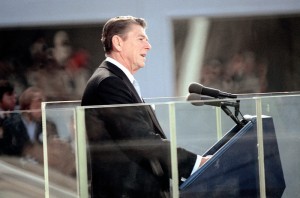
Among those files, I also discovered the notes of an FBI agent who tried to interview Joseph Reed about his October Surprise knowledge. The FBI man, Harry A. Penich, had scribbled down that “numerous telephone calls were placed to him [Reed]. He failed to answer any of them. I conservatively place the number over 10.”
Finally, Penich, armed with a subpoena, cornered Reed arriving home at his 50-acre estate in Greenwich, Connecticut. “He was surprised and absolutely livid at being served at home,” Penich wrote. “His responses could best be characterized as lashing out.”
Reed threatened to go over Penich’s head. In hand-written “talking points” that Penich apparently used to brief an unnamed superior, the FBI agent wrote: “He [Reed] did it in such a way as to lead a reasonable person to believe he had influence w/you. The man’s remarks were both inappropriate and improper.”
But the hard-ball tactics worked. When Reed finally consented to an interview, Task Force lawyers just went through the motions.
Penich took the interview notes and wrote that Reed “recalls no contact with Casey in 1980,” though Reed added that “their paths crossed many times because of Reed’s position at Chase.” As for the 1981 CIA visit, Reed added that as the newly appointed U.S. ambassador to Morocco, he “would have stopped in to see Casey and pay respect.”
But on whether Reed made any remark about obstructing Carter’s October Surprise, Reed claimed he “does not specifically know what October Surprise refers to,” Penich scribbled down.
The Task Force lawyers didn’t press hard. Most strikingly, the lawyers failed to confront Reed with evidence that would have impeached his contention that he had “no contact with Casey in 1980.” According to the sign-in sheets at the Reagan-Bush campaign headquarters in Arlington, Virginia, which the Task Force had obtained, Reed saw Casey on September 11, 1980, less than two months before the election.
When the official House Task Force report was issued on January 13, 1993, the Task Force largely cleared the Republicans of the longstanding October Surprise charges, but that conclusion was based on tendentious interpretations of the published evidence and the withholding of many incriminating documents.
Among the evidence that was never shared with the American people was the fascinating connection between the powerful friends of David Rockefeller and the shadowy operatives who had maintained clandestine contacts with the Iranian mullahs during the long hostage crisis.
Investigative reporter Robert Parry broke many of the Iran-Contra stories for The Associated Press and Newsweek in the 1980s. You can buy his latest book, America’s Stolen Narrative, either in print here or as an e-book (from Amazon and barnesandnoble.com).

 The Harvard Index however goes far beyond the Catholic Church’s Index which selectively banned books after careful reading, review and evaluation within the Church’s hierarchy. This frivolous decision by Harvard constitutes a violation of the most fundamental principles of university education which are debate, discussion, critique and analysis.
The Harvard Index however goes far beyond the Catholic Church’s Index which selectively banned books after careful reading, review and evaluation within the Church’s hierarchy. This frivolous decision by Harvard constitutes a violation of the most fundamental principles of university education which are debate, discussion, critique and analysis.

























